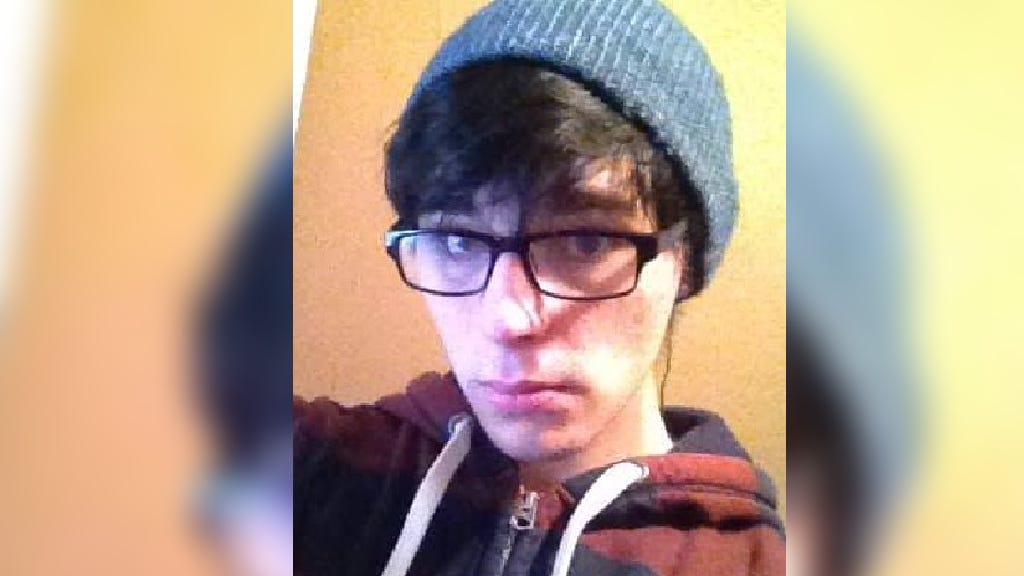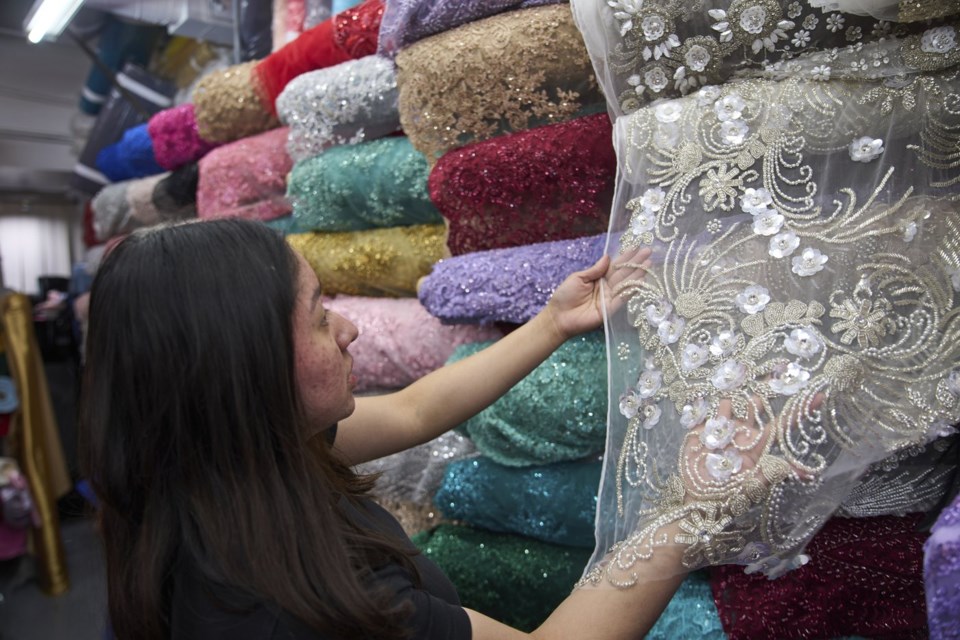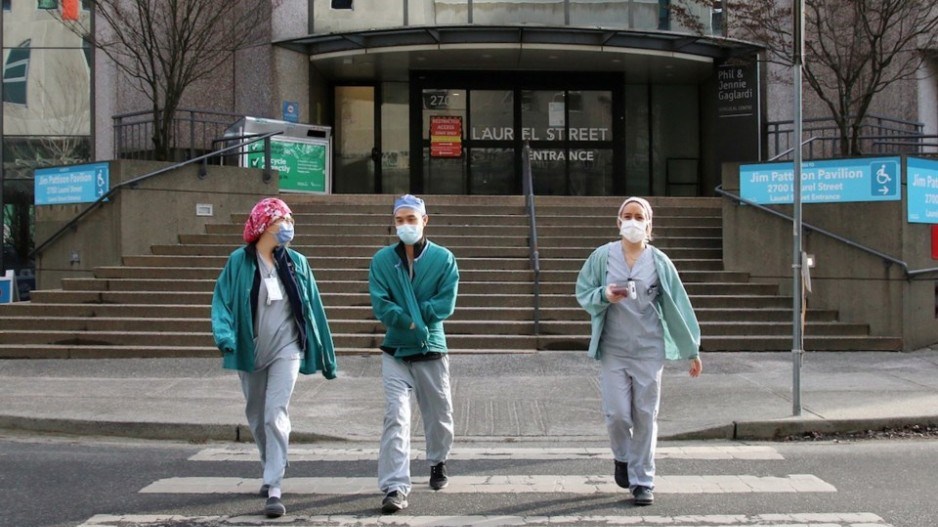 Shoreline News
Shoreline News
Avondale Volunteer Fire Department celebrate new pumper truck
Members of the Avondale Volunteer Fire Department and special guests celebrated the arrival of their new $623,000 pumper truck with a “Push In” ceremony at the Fire Hall on Saturday, March 22. Amo ...More ...

The post Avondale Volunteer Fire Department celebrate new pumper truck appeared first on The Shoreline News.
4 Apr 2025 14:45:15
 CBC Ottawa
CBC Ottawa
Westboro bus crash driver has not responded to summons, inquest hears
Aissatou Diallo, the driver of the Ottawa double-decker in the collision that left three passengers dead in 2019, has not responded to a summons to testify at an ongoing inquest into the tragedy. ...More ...

Aissatou Diallo, the driver of the Ottawa double-decker in the collision that left three passengers dead in 2019, has not responded to a summons to testify at an ongoing inquest into the tragedy.
4 Apr 2025 14:42:35
 Exclaim!
Exclaim!
Jo Passed Maps Out West Coast Tour
After returning from a seven-year break with new single "Weekend," Jo Passed has announced a short run of tour dates taking place in "their natural habitat of the Pacific Northwest" this spring. ...More ...
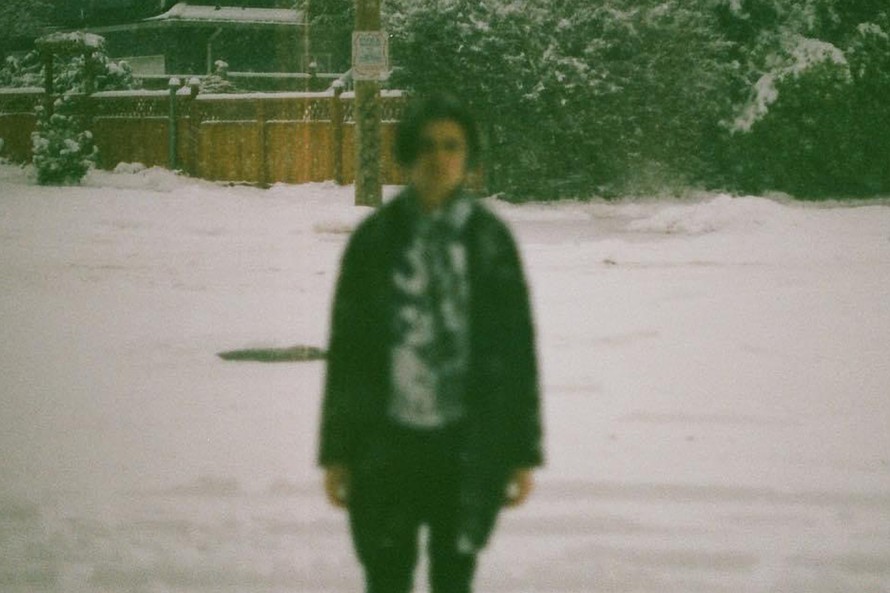
After returning from a seven-year break with new single "Weekend," Jo Passed has announced a short run of tour dates taking place in "their natural habitat of the Pacific Northwest" this spring.
Kicking off in their hometown of Vancouver on May 8, the artist will be joined by their brother and sister, Cameron Gates and Téa Mei for the run. From there, the trek traces the West Coast south, making stops in Seattle, Portland, Los Angeles and San Diego before the concluding gig in Oakland on May 20. See the schedule below.
Jo Passed 2025 Tour Dates:
05/08 Vancouver, BC - Green Auto
05/09 Seattle, WA - Clock Out
05/10 Portland, OR - High Water Mark
05/16 Los Angeles, CA - Permanent Records Roadhouse
05/17 San Diego, CA - Kensington Club
05/20 Oakland, CA - Stork Club
4 Apr 2025 14:42:01
 Fredericton Independent
Fredericton Independent
‘I lied… to keep myself safe’
Subscribe nowWarning: This story contains graphic descriptions of a violent crime.A former Fredericton man who lied at his spouse’s murder trial two years ago told a judge Friday he had no choic ...More ...
Warning: This story contains graphic descriptions of a violent crime.
A former Fredericton man who lied at his spouse’s murder trial two years ago told a judge Friday he had no choice, because he feared being beat up or worse in prison for testifying for the Crown.
Zachery David Murphy, 24, formerly of Kings College Road in Fredericton, appeared in Fredericton provincial court Friday by video conference from the Springhill Institution in Nova Scotia for the continuation of his sentencing hearing for perjury.
He’s serving a life sentence, having previously admitted to second-degree murder in the April 2020 death of Clark Ernest Hunter Greene.
Murphy was a key witness in the January 2023 first-degree murder trial of his estranged spouse, Angela April Walsh, 25, AKA Ali Morningstar.
4 Apr 2025 14:41:55
 Prince George Citizen
Prince George Citizen
The Latest: Another day of crushing Wall Street losses as China retaliates
World shares slid downward, U.S. futures fell and Wall Street appeared on track for another day of crushing losses Friday as investors counted the potential costs of U.S.
4 Apr 2025 14:41:48
 Bay Observer
Bay Observer
Milton man said NO, thwarted two would-be home invaders
The Halton Regional Police Service (HRPS) is searching for two suspects after a botched home invasion in Milton. Early today, at 4:05 a.m. two suspects, one armed with a hammer, smashed their w ...More ...
The Halton Regional Police Service (HRPS) is searching for two suspects after a botched home invasion in Milton.
Early today, at 4:05 a.m. two suspects, one armed with a hammer, smashed their way through the front door of a residence in the area of Wilson Drive and Joyce Boulevard.
The suspects confronted the male resident of the home demanding the keys to his vehicles. A brief physical struggle ensued for control of the hammer before both suspects fled the residence on foot.
No physical injuries were sustained and no property was taken.
Both suspects are described as male, wearing dark coloured clothing and face masks.
The HRPS is attempting to identify the suspects and potential suspect vehicle and is requesting anyone with information regarding this investigation, including any security or dash cam video from the area of Wilson Drive and Joyce Boulevard between the hours of 3:30 a.m. and 4:30 a.m. to contact the 1 District Criminal Investigations Bureau at 905-825-4777 ext. 2416.
Tips can also be submitted anonymously to Crime Stoppers. at 1-800-222-8477 (TIPS) or through the web at www.haltoncrimestoppers.ca.
4 Apr 2025 14:41:16
 Thunder Bay Newswatch
Thunder Bay Newswatch
OPP on hunt for donut driver
On March 16, at about 6:40 p.m., a motorist was caught on camera spinning circles in the parking lot of the Blake Hall Community Centre.
4 Apr 2025 14:40:19
 Yukon News
Yukon News
Alberta premier calls Trump tariffs an 'important win' for Canada
Trump backs off tariffs on energy, agricultural products and other exports
4 Apr 2025 14:36:45
 Prince George Citizen
Prince George Citizen
Demand for viral 'torpedo' baseball bats has sent a Pennsylvania factory into overdrive
KING OF PRUSSIA, Pa. (AP) — A 70-year-old man who plays in an area senior hardball league popped into Victus Sports this week because he needed bats for the new season.
4 Apr 2025 14:36:04
 The Bureau
The Bureau
Canadian Judge Reverses Release of Cartel Sicario Seeking Refugee Status After Trump Terror Designation
Human Rights Watch is urging Mexican authorities to investigate the discovery last month of hundreds of bone fragments and articles of clothing found in underground ovens in Jalisco—a cartel str ...More ...
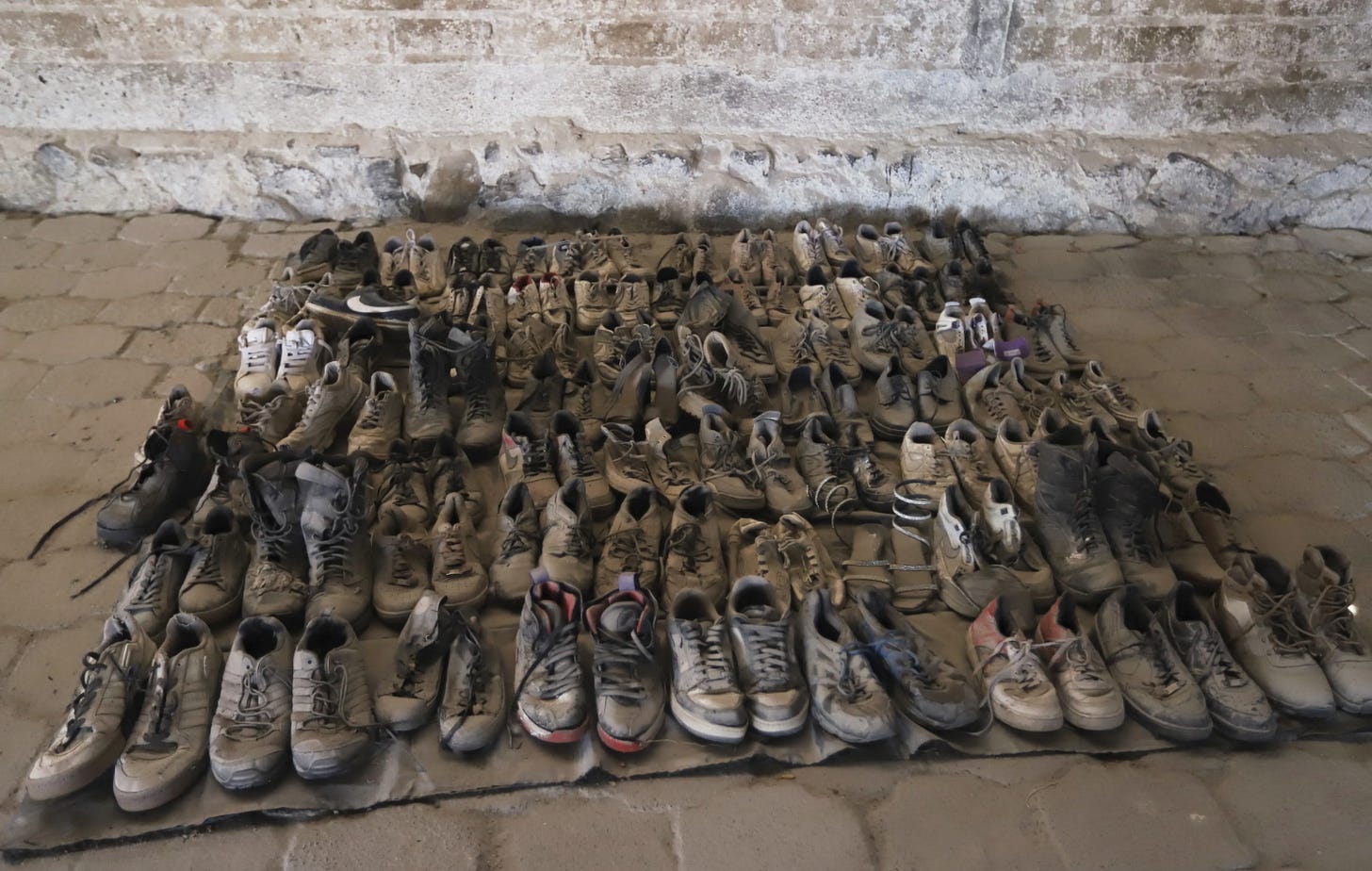
OTTAWA — As reported exclusively by The Bureau, a senior U.S. government expert has issued a stark warning: Canada’s economy—and its communities—are increasingly exposed to Chinese-led fentanyl trafficking networks that reach the highest levels of the Chinese Communist Party in Beijing.
In a follow-up report publishing tomorrow, the expert predicts that Mexican cartels will intensify an already visible shift northward—moving fentanyl superlabs, cross-border smuggling routes, and laundering operations into Canada. With U.S. and Mexican authorities tightening their grip on southern trafficking routes under the Trump administration, the cartels are exploiting Canada’s enforcement blind spots.
“This is a critical point I want to make,” the source told The Bureau in exclusive interviews. “As the U.S. tightens control over the southwest border and ramps up operations against the cartels in Mexico, what do you think happens in Canada? The demand from the U.S. doesn’t disappear. So who becomes the supplier? It won’t be the U.S.—we’ll shut those labs down. But Canada? Canada’s role will grow. That’s my prediction: as the southern border tightens, and fewer drugs get through, drug production in Canada will increase.”
A Federal Court ruling this week in Ottawa may already offer proof of that shift.
A self-admitted Mexican cartel sicario—who illegally re-entered Canada in February—was nearly released into the community, despite a history that includes a prior deportation, a confession to working as a contract killer, and confirmed ties to La Familia Michoacana, one of Mexico’s most violent cartels.
The decision to halt his release not only reinforces the U.S. expert’s warning, it also signals that Canada’s immigration, border, and detention systems are already under severe strain.The man, identified in court as “C.M.,” is a 42-year-old Mexican national linked to cartel cocaine trafficking investigations. He first entered Canada in 2006 on a temporary visa to work at a Best Western hotel.
“On February 13, 2025, [C.M.] entered Canada at an unofficial port of entry with his minor child,” the ruling states. “They made a claim for refugee protection based on fear of the child’s mother and fears that the Trump administration would separate the Respondent from his child. He was questioned and released with conditions.”
On April 1, Justice Julie Blackhawk quashed a controversial Immigration and Refugee Board (IRB) ruling that had authorized the 42-year-old hitman’s release. Her ruling overturned the IRB’s March 7 order and mandated a new detention hearing before a different adjudicator.
The decision—first reported by the Vancouver Sun—lays out stark details of the case.
According to a joint investigation by the Vancouver Police Department and the RCMP, C.M. was deeply embedded in cartel crime. In 2014, he told an undercover officer he was a hitman for hire affiliated with La Familia Michoacana. He disclosed his fees, killing methods, and body disposal techniques.
Founded in the 1980s as a vigilante group claiming to impose order over violent narcos and kidnappers, La Familia Michoacana took root in Michoacán, near Mexico City, before expanding into neighboring states and establishing trafficking networks across the United States. The cartel’s movements have long mirrored enforcement patterns—shifting territories and tactics in response to pressure. Its offshoot, La Nueva Familia Michoacana, is under investigation for trafficking fentanyl, cocaine, and methamphetamine into the U.S., adapting its operations to exploit the synthetic drug trade.
In blunt terms, Justice Blackhawk found the decision to release the admitted sicario—issued by IRB Member Maleeka Mohamed—was “unreasonable, unintelligible, and not justified.”
The Public Safety Minister quickly filed an urgent application for judicial review to block his release, arguing that the IRB’s ruling failed in three critical respects:
It downplayed the danger posed by the Respondent, a self-admitted drug trafficker and known associate of a terrorist organization, simply because criminal charges had never been laid;
It ignored key evidence from a 2014 VPD–RCMP investigation, in which the Respondent voluntarily identified himself as a hitman for hire, detailing his fees and methods;
It overstated the adequacy of the proposed release conditions, including “around-the-clock” supervision, despite evidence those measures were not in place.
Justice Blackhawk agreed. By the tenth paragraph of her 98-paragraph decision, she had already outlined a chain of events that amounts to a scathing indictment of Canada’s border security and immigration enforcement.
In 2011, C.M. was found by Vancouver Police in possession of a significant quantity of controlled substances and drug paraphernalia. He was arrested—but never charged.
In 2014, during the joint police operation into organized crime and drug trafficking, C.M. attended a meeting where a controlled substance was purchased. An undercover officer recorded him describing his role as a contract killer, including his methods and disposal techniques.
On November 4, 2014, C.M. was arrested and detained by the Canada Border Services Agency. Two days later, an exclusion order was issued. He was released on conditions and deported in 2015.
Despite this troubling history, no criminal charges were ever pursued.
In his 2025 refugee intake interview, C.M. stated he would be staying with David Jordan-Garcia, also known as “Spanish Dave”—a man previously identified by Canadian authorities as a La Familia associate in the 2014 investigation.
Despite this clear red flag, IRB Member Mohamed approved C.M.’s release, citing conditions that included supervision by two bondspersons and the installation of home video surveillance. The ruling went into some detail about how “trusted family members”—who were not legally bound as sureties—could help fill supervision gaps left by the two bondspersons, Jorge Estaban Colin and his father, Jesus Colin, both of whom worked long hours and had limited capacity to monitor C.M. around the clock. Yet, as Justice Blackhawk pointed out, the video surveillance system was not operational at the time the release was approved.
“There is simply no information to indicate why the Member was of the view that the video surveillance did not need to be in place prior to the Respondent’s release,” Blackhawk wrote. “This is unreasonable, unintelligible, and not justified.”
She also found that Mohamed relied too heavily on the absence of recent charges, failing to account for the fact that C.M. had spent nearly a decade outside of Canada. Mohamed described the threat posed by C.M. as “lower-end,” a finding Blackhawk called “impossible to reconcile” with the record.
“When questioned by the CBSA on February 13, 2025, the Respondent stated that he would be residing with David Jordan-Garcia, a.k.a. Spanish Dave, a person known to the VPD and RCMP from the 2014 investigation,” Blackhawk wrote. “[Mohamed] states ‘it does appear that [C.M.] has reassociated with a couple of individuals who were alleged back in 2014 of being associated with this organization.’ Therefore, it is unclear how [Mohamed] concluded that there is minimal information concerning his current ties to La Familia.”
4 Apr 2025 14:35:22
 CBC
CBC
U.S. sending Israel more than 20,000 assault rifles that Biden had delayed: sources
The Trump administration moved ahead with the sale of more than 20,000 U.S.-made assault rifles to Israel last month — a sale the administration of former president Joe Biden had delayed over concer ...More ...
The Trump administration moved ahead with the sale of more than 20,000 U.S.-made assault rifles to Israel last month — a sale the administration of former president Joe Biden had delayed over concerns they could be used by extremist Israeli settlers.
4 Apr 2025 14:34:51
 Exclaim!
Exclaim!
The Lonely Island Are Sorry for Spoiling the Ending of 'The Sixth Sense'
M. Night Shyamalan's 1999 thriller The Sixth Sense has one of the most iconic twist endings of all time, which is why the Lonely Island are apologizing for spoiling the film's big reveal in their 200 ...More ...

M. Night Shyamalan's 1999 thriller The Sixth Sense has one of the most iconic twist endings of all time, which is why the Lonely Island are apologizing for spoiling the film's big reveal in their 2008 song "Jizz in My Pants."
The pop-rap track about premature ejaculation features the line, "When Bruce Willis was dead at the end of Sixth Sense, I / Jizzed in my pants." Speaking about the song on this week's episode of The Lonely Island and Seth Meyers Podcast, they acknowledged that the line is a contentious one — perhaps even more so than the sexual content.
"So this is probably, outside of the censorship issues, the most controversial part of the song, because it is ruining the movie," Andy Samberg admitted.
When Seth Meyers asked if the window for spoilers had closed because the film was so old, Akiva Schaffer reflected, "In that year, I would argue it was closed, because anyone that could watch this video would've seen The Sixth Sense. As time goes by, it actually becomes less okay, because you could have a 20-year-old right now that The Sixth Sense is a classic. ... So it fully gives it away."
Samberg then offered a formal apology, saying, "To anyone out there who this line spoiled the movie for you guys, I truly am sorry. I would hate that myself."
4 Apr 2025 14:34:41
 Halifax Examiner
Halifax Examiner
Nova Scotia’s South Shore-St. Margarets riding one to watch in federal election
In five federal elections over 17 years, the riding has shifted back and forth like the tide, alternating between the Conservatives and Liberals. The post Nova Scotia’s South Shore-St. Margar ...More ...

In five federal elections over 17 years, the riding has shifted back and forth like the tide, alternating between the Conservatives and Liberals.
The post Nova Scotia’s South Shore-St. Margarets riding one to watch in federal election appeared first on Halifax Examiner.
4 Apr 2025 14:33:59
 Shoreline News
Shoreline News
Spaniard’s Bay bridge damaged by excavator
By Olivia Bradbury / Local Journalism Initiative Reporter The Town of Spaniard’s Bay has acknowledged responsibility for damage done to a trailway bridge this past winter.Councillor Sherry Lundri ...More ...
By Olivia Bradbury / Local Journalism Initiative Reporter
The Town of Spaniard’s Bay has acknowledged responsibility for damage done to a trailway bridge this past winter.
Councillor Sherry Lundrigan raised the issue at council’s March 18 public meeting.
Lundrigan said she has been contacted by a member of the trailway committee who sent photos of the damaged bridge at Northern Cove Pond.
The damage occurred when a Town excavator was driven over the bridge to another area of town where work needed to be done. This is not proper procedure in the town. Vehicles with mechanical treads instead of rubber tires are supposed to be transported to and from worksites by trailer, not driven over pavement or bridges.
“The trailer was there over on the other side of the bridge, so I don’t know why that happened,” said Lundrigan. “It was an accident, but it was an accident that should never have happened, because the equipment should not be anywhere near the bridge or trailways unless we’re doing work, and there was no work being performed on that bridge that day. It was just being driven over the bridge and that’s when all the damage happened.”
Lundrigan said the trailway committee raises money to maintain the trails, and it is upsetting and disheartening for its members to know a piece of Town equipment caused needless damage to the bridge.
Mayor Paul Brazil noted that from the photo of the damage it looks like some of the bridge’s guard planks were scratched. It will take some work to fix the damage, but it is aesthetic damage and should not affect the bridge’s integrity, he said.
Lundrigan made a motion that council contact the trailway committee to see if it would like the Town to fix the damage or make a monetary donation.
“We acknowledge our responsibility for it,” said Mayor Brazil, suggesting a donation towards the next project might compensate for the damage done.
Deputy Mayor Tammy Oliver seconded Lundrigan’s motion, which passed unanimously.
The post Spaniard’s Bay bridge damaged by excavator appeared first on The Shoreline News.
4 Apr 2025 14:33:28
 CBC Ottawa
CBC Ottawa
Carney pledges $150M boost to 'underfunded' CBC
Liberal Leader Mark Carney said on Friday that his government would provide an initial $150-million annual funding increase to CBC and Radio-Canada as part of a new mandate for the public broadcaste ...More ...

Liberal Leader Mark Carney said on Friday that his government would provide an initial $150-million annual funding increase to CBC and Radio-Canada as part of a new mandate for the public broadcaster.
4 Apr 2025 14:33:22
 Prince George Citizen
Prince George Citizen
Federal officials are quietly terminating the legal residency of some international college students
WASHINGTON (AP) — A crackdown on foreign students is alarming colleges, who say the Trump administration is using new tactics and vague justifications to push some students out of the country.
4 Apr 2025 14:32:45
 Bay Observer
Bay Observer
Man at large following stabbing death in Brantford
One man is in custody and another is at large following a fatal stabbing in Brantford. Thursday afternoon, the Brantford Police Service were called to a disturbance at a suffering from serious stab wo ...More ...
One man is in custody and another is at large following a fatal stabbing in Brantford. Thursday afternoon, the Brantford Police Service were called to a disturbance at a suffering from serious stab wounds. The victim died a short time later.
Police investigation has determined that the parties involved were known to each other and this is not believed to be a random incident.
Police were able to recover the murder weapon and currently have one male in custody for Accessory after the Fact to Murder, Weapons Dangerous, and Assault with a Weapon.
Now police are actively seeking to arrest 27-year-old Bradley George Saunders for Second Degree Murder.

Saunders is described as male, Indigenous, 6’2” in height, approximately 155 lbs., with long dark hair. A clothing or vehicle description is not available at this time.
Saunders is to be considered Armed and Dangerous. If a member of the public locates this person, DO NOT APPROACH. Contact 911 immediately.
Anyone with information or video footage related to this incident is asked to contact the Brantford Police Service at 519-756-7050. Video footage can be uploaded to the following link: https://brantfordpoliceservice.ca.evidence.com/axon/community-request/public/br25012473
Information can also be provided anonymously to Brant – Brantford Crime Stoppers by calling 519-750-8477 or 1-800-222-8477 and referring to Incident # 25-12473 or by submitting a web tip online at: https://www.crimestoppersbb.com/submit-a-tip/
4 Apr 2025 14:32:29
 VOCM
VOCM
Man Accused of Shooting Snowmobiler Denied Bail For Now
A man accused of shooting a snowmobiler on the west coast of the island has been denied bail. Provincial Court Judge Karen Rehner was prepared today to release Wayne Hynes, who has been in custody sin ...More ...
A man accused of shooting a snowmobiler on the west coast of the island has been denied bail.
Provincial Court Judge Karen Rehner was prepared today to release Wayne Hynes, who has been in custody since his arrest on March 16th.
But it came down to the supervision of him by relatives offering themselves as sureties, or those willing to put up cash that could be lost if he were to break conditions of his release.
And while a half dozen of his family members were willing to do that on a drop-in basis, none were able to act as “residential” or live-in sureties, providing constant supervision.
That proved to be a deal-breaker for the judge, who refused to release Hynes until he can satisfy that requirement.
The 66-year-old from Port au Port West is charged with attempted murder, pointing a firearm, discharging a firearm and aggravated assault in connection with the shocking incident near his house on February 21st.
Hynes is accused of shooting 26-year-old Chad Hickey as he another snowmobiler rode past his home. The victim reportedly continues to recover from serious head injuries.
While Hynes remains at the West Coast Correctional Centre for now, court heard efforts will continue to satisfy the outstanding condition of bail prior to his next court date on April 28th.
4 Apr 2025 14:32:04
 Prince George Citizen
Prince George Citizen
Sell-off worsens worldwide and Dow drops 1,200 after China retaliates against Trump tariffs
NEW YORK (AP) — Stock markets worldwide are careening even lower Friday after China matched President Donald Trump’s big raise in tariffs in an escalating trade war . Not even a better-than-expect ...More ...
NEW YORK (AP) — Stock markets worldwide are careening even lower Friday after China matched President Donald Trump’s big raise in tariffs in an escalating trade war . Not even a better-than-expected report on the U.S.4 Apr 2025 14:31:14
 Nunatsiaq News
Nunatsiaq News
‘We are all butter, no guns’: Experts look back at Canada’s difficult Arctic defence history
Arctic security and sovereignty are shaping up to be key issues for the April 28 federal election. This article is part of a series examining northern security, and the plans that Canada’s main poli ...More ...
Arctic security and sovereignty are shaping up to be key issues for the April 28 federal election. This article is part of a series examining northern security, and the plans that Canada’s main political parties are promising.
For decades, Inuit have played a primary role in asserting Canadian Arctic sovereignty.
“I’m one of the proudest Canadian flagpoles that we can be,” said David Akeeagok, Nunavut’s economic development and transportation minister, in a Feb. 17 speech during the Aqsarniit Trade Show and Conference in Ottawa.
Akeeagok is an Inuk from Grise Fiord.
His family was relocated to Grise Fiord, Canada’s northernmost community, through a government-sponsored program in the 1950s with the goal of “demonstrating Canadian sovereignty,” as described in the Qikiqtani Truth Commission report.
However, with all three federal party leaders recently coming to Iqaluit, pledging to change Canada’s approach to Arctic security, some military experts say that even if the political leaders follow through with their campaign promises, those would merely plant more maple leaf “flagpoles” in the region.
Butter versus guns
Retired Col. Pierre Leblanc was a commander of the Canadian Forces Northern Area from 1995 to 2000.
At that time, he knew that if a foreign nation were to illegally enter Arctic waters, there was little he could do.
In fact, there was little chance he would actually know about the invasion.
“Would we know that there was a North Korean vessel with missile components for Iran transiting the Northwest Passage? The answer to that question was no,” he said.
“And do we have anything to stop it from doing it? No, we don’t have anything.”
And the situation has changed little since then, Leblanc said.
By 1987, Brian Mulroney’s Conservative government had identified the need for submarines equipped to patrol the Arctic, and was set to acquire 10 to 12 nuclear-powered subs for $8 billion.
“It didn’t make it to the next budget,” Leblanc said.
Three decades later, the discussion was revived.
The Liberal government unveiled its plan to acquire 12 non-nuclear submarines as part of its $81.1-billion defence policy introduced in April 2024.
The first submarine is set to be delivered “no later than” 2035.
But Leblanc says he learned to be skeptical of government defence pledges.
“We are all butter, no guns,” he said referring to an old metaphor for governments’ attempts to balance social program spending (butter) and military spending (guns).
The federal leaders prefer “butter” as it includes better “vote-buying initiatives,” he said.
‘There is enormous merit in showing the flag’
Canada’s major federal party leaders have announced various defence plans for the Arctic as the April 28 federal election approaches.
Conservative Leader Pierre Poilievre promises a military base for Iqaluit, a plan NDP Jagmeet Singh showed support for during a recent visit to the North. Liberal Leader and Prime Minister Mark Carney visited Iqaluit in March to announce an over-the-horizon radar detection system.
“Canadians want to know the North is defended, even if it’s not,” said Ken Coates, a senior policy fellow with the Macdonald-Laurier Institute, a policy think tank based in Ottawa.
With growing threats from Russia and China, along with U.S. President Donald Trump “rattling his sabres,” Arctic defence policies are an “exercise in bribery,” that will do little except for planting more flags, he said.
“Don’t get me wrong there is enormous merit in showing the flag,” he said, but adding he finds it hard to get excited about the parties’ pre-election platforms.
“It’s hard to say, ‘Boy, that’s really dynamic, aren’t we proud that we’re finally doing something.'”
And it’s likely that these infrastructure projects will be delayed or abandoned as soon as the feeling of emergency is gone, Leblanc added.
“That’s what happened to Nanisivik,” he said.
The Nanisivik refuelling station near Arctic Bay was announced in 2007 by then-Prime Minister Stephen Harper at a time of heightened tensions between Russia and the rest of the world.
The project has been delayed several times in the past decades and its opening date is still in limbo.
‘Five-dollar safety belt’: Where does Canada’s defence stand now?
The last base built in Canada that is still operational is in Suffield, Alta., and dates back to 1972, according to the Department of National Defence.
Canadian Armed Forces currently have 20 bases and two stations including CFS Alert, the most northerly inhabited location in the world.
Bases have significantly larger permanent personnel than stations, with CFS Alert having only 55 permanent residents.
The Department of National Defence doesn’t publish the number of personnel on all of its bases. But of those published, the base in Halifax has the largest staff with 7,500 military and 2,300 civilian personnel.
And the base in Shilo, Man., is the smallest with roughly 1,700 both military and civilian residents.
If the Iqaluit base is built it will likely have 250 people attached to it at the very most, Coates estimated.
In the past decades, roughly a dozen Canadian Armed Forces bases were shut down across the country, at the same time as Canada has been under pressure to meet its commitment to spend two per cent of its GDP towards defence as a NATO member.
“Nobody buys safety belts that are only good for a five-kilometre impact speed,” Leblanc said.
“But I’m not sure that we even have a safety belt now, from a defence point of view, even if we do it’s certainly the five-dollar one.”

The Canadian Armed Forces currently have 20 operational bases ranging in size and the number of personnel attached. If you want to learn more about each base follow the link to view an interactive map of all the bases. (Created by Arty Sarkisian)
4 Apr 2025 14:30:43
 Shoreline News
Shoreline News
Paradise upgrades won’t interfere with Canada Summer Games, says Street
By Mark Squibb The Town of Paradise is moving ahead with major upgrades to Kenmount Road that will see the installation of storm, sewer, curb, and gutter, as well as the addition of a third median ...More ...
By Mark Squibb
The Town of Paradise is moving ahead with major upgrades to Kenmount Road that will see the installation of storm, sewer, curb, and gutter, as well as the addition of a third median turning lane, sidewalk, and multi-purpose trail.
Deputy Mayor Kimberley Street brought forward the matter for discussion during the March 25 committee of the whole meeting.
Street explained that phase 1 of the project will include 500 metres of work from the McNamara Drive intersection to approximately civic address number 1250, and that staff received seven bids on the project. The lowest bidder was Modern Paving, which submitted a bid of just over $2.8 million. The highest bidder was Mercer’s Paving with a bid of $3.9 million. Both bids are exclusive of HST, and staff recommended that council award the contract to Modern Paving.
The project is cost shared with the federal government to the tune of $3.1 million, plus HST.
Construction is expected in begin this spring with completion later this year. As per the funding agreement, the project needs to be finished by July 2027.
“This is a high traffic area, and a major hub for our business community,” said councillor Patrick Martin, who applauded the addition of a turning lane in the plans.
Councillor Tommy Maher, meanwhile, said he was glad to see the project was competitively priced, noting all seven bidders were within a similar cost ballpark. Maher then asked whether the construction will have any impact on the Canada Summer Games, scheduled for August.
Deputy Mayor Kimberley Street said the impacts will be minimal.
“There are no lane or road closures going to happen, but they do anticipate times where traffic will be slow moving,” said Street. “There is no plan to stop the work, but they can adjust the workplan so it has the least impact on the Canada Games.”
Council had earmarked $246,000 for the design phase of the project in, but awarded the contract to Irvin Engineering at $164,657, well underbudget. Additional survey work brought the cost to $198,017, still under the initial budget.
The post Paradise upgrades won’t interfere with Canada Summer Games, says Street appeared first on The Shoreline News.
4 Apr 2025 14:24:27
 Prince George Citizen
Prince George Citizen
Mbappé and Rüdiger fined by UEFA but cleared to play CL quarters after 'indecent' celebration
NYON, Switzerland (AP) — Real Madrid stars Kylian Mbappé and Antonio Rüdiger were fined by UEFA on Friday but escaped bans from the Champions League quarterfinals over “indecent” post-game cel ...More ...
NYON, Switzerland (AP) — Real Madrid stars Kylian Mbappé and Antonio Rüdiger were fined by UEFA on Friday but escaped bans from the Champions League quarterfinals over “indecent” post-game celebrations in the previous round.4 Apr 2025 14:22:31
 Toronto Star
Toronto Star
NDP looks to close offshore tax loopholes, with a focus on Brookfield's Bermuda ties
MONTREAL - NDP Leader Jagmeet Singh says that he would close loopholes that allow corporations to put money in offshore accounts, with a focus on Brookfield the company Liberal Leader Mark Carney was ...More ...
MONTREAL - NDP Leader Jagmeet Singh says that he would close loopholes that allow corporations to put money in offshore accounts, with a focus on Brookfield the company Liberal Leader Mark Carney was chair of until he entered politics.4 Apr 2025 14:22:20
 Exclaim!
Exclaim!
Magi Merlin's Freak Demands to Be Matched on 'A Weird Little Dog'
It probably goes without saying at this point that one of my favourite records of 2025 so far is undoubtedly Saya Gray's SAYA. For that album, she really tempered the far-flung experimentalism of som ...More ...

It probably goes without saying at this point that one of my favourite records of 2025 so far is undoubtedly Saya Gray's SAYA. For that album, she really tempered the far-flung experimentalism of some of her older work, purposefully as a challenge to herself to fit the pop form, but didn't lose any of her definitive innovation in the process. It feels like Montreal's Magi Merlin is doing some mirror-image wizardry in her own work right now.
On her surprise-released new EP, A Weird Little Dog, the artist expands upon the horizons she began broadening with the 2024 double single, "Bip" and "9volt." That's not to say that Merlin hasn't always fearlessly embraced dipping her toes into the waters of new genres, bringing these influences into her shapeshifting mélange with a naturalized ease; these four tracks somehow land somewhere in between the shiny, refined hip-pop craft of 2022's Pissed Black Girl and the woozy alt-R&B haze of 2021's Drug Music.
While A Weird Little Dog may lean more toward the latter tempo-wise, there's still uncharted territory to be found in this middle ground of Merlin's previous releases. With everything she does, there's a new synthesis of the myriad elements that make up the lexicon of what a Magi Merlin song can be. From the the new creases in the blank cardstock of experience where every piece of music begins, she can thrillingly fold any origami shape you can imagine.
"It feels like a new start, an exercise in having faith in the listener and trusting them to be able to take time and even see themselves in this work," Merlin said of the project in a press release — a sentiment reinforced in the title of the closing track: "see!igetit."
4 Apr 2025 14:21:35
 Shoreline News
Shoreline News
No roosters in the henhouse on Fowlers Road
By Craig Westcott You can have the hens, but you can’t have a rooster.It wasn’t put as bluntly as that, but that’s the bottom-line response to an application by a resident of 43 Fowlers Road, ...More ...
By Craig Westcott
You can have the hens, but you can’t have a rooster.
It wasn’t put as bluntly as that, but that’s the bottom-line response to an application by a resident of 43 Fowlers Road, Chamberlains who asked permission from CBS town council to keep a hobby farm.
Ward 3 councillor Gerard Tilly said the resident will be allowed to keep nine chickens but with several conditions. The applicant must submit a manure management plan, register the farm with the Province’s farm registration identification program, obtain permits for the henhouse and any other structures related to the keeping of chickens, and that no roosters be permitted on the property.
“We don’t have any issue with the hobby farm provided that there is no rooster on the property,” Tilley said. “And for the record, it’s not that we don’t like roosters, but that’s part of the regulations and roosters are not allowed under the regulations.”
That remark drew a few giggles and grins.
“Noted, that councillor Tilley is unopposed to roosters generally, just when it comes to backyards,” said Mayor Darrin Bent, smiling.
In other development news:
An application to subdivide land at 5 – 9 Stanleys Road in Long Pond has been approved, but without the developer’s request for variances for all of the lots.
Council ruled the applicant can apportion the land into three building lots and that one of the lots can have a reduced frontage of 13.9 metres instead of the standard 15 metres. But the request for variances on the building line setback for the two other lots was refused.
Tilley said a shorter setback on those lots isn’t necessary because the existing regulation won’t prejudice their development.
And finally, council has approved the opening of a massage therapy clinic at 674 Conception Bay Highway in Kelligrews. That’s the same building that houses the Just for Men barbershop.
“This is considered discretionary under our zoning,” said Tilley. “We did have a public notice (published) and we had no real concerns raised by the public so staff is welcoming the new business to Conception Bay South.”
The post No roosters in the henhouse on Fowlers Road appeared first on The Shoreline News.
4 Apr 2025 14:20:09
 Bay Observer
Bay Observer
West Lincoln man charged with child luring following Niagara Police sting operation
Following some undercover work by the Niagara Police Internet Child Exploitation (ICE) Unit and Ontario Provincial Police (OPP) a man was arrested and charged with luring of minors using the Int ...More ...
Following some undercover work by the Niagara Police Internet Child Exploitation (ICE) Unit and Ontario Provincial Police (OPP) a man was arrested and charged with luring of minors using the Internet.
Over the course of the investigation, the suspect is alleged to have communicated for a sexual purpose unknowingly with the undercover police officer, posing as a young person under the age of 16.
On April 3, 2025, Detectives from the NRPS ICE Unit and Offender Management Unit (OMU) identified and arrested 39-year-old Johnathan Jeffrey Ahlstedt of West Lincoln for Luring a Child via Telecommunication to Facilitate Sexual Interference and Luring a Child via Telecommunication to Facilitate Sexual Assault.
Johnathan Jeffrey AHLSTEDT is currently being held in custody pending a bail hearing that was scheduled for today in St. Catharines.
Niagara Police caution residents that online platforms that allow like-minded users to engage with minors, create, share, and store Child Sexual Abuse Material (CSAM) are prevalent on the Internet. Offenders who attempt to lure children behind anonymous accounts on different platforms can be identified and will be held accountable for their actions.
For more information on how parents and guardians can keep children safe online CLICK HERE https://cybertip.ca/en/
4 Apr 2025 14:19:49
 Prince George Citizen
Prince George Citizen
How Trump's latest tariffs could affect your wallet
NEW YORK (AP) — President Donald Trump has unveiled his latest tariffs , and they could have significant implications for your wallet.
4 Apr 2025 14:17:49
 Business in Vancouver
Business in Vancouver
B.C. counters February losses, adding 6K jobs in March
StatCan data reveals biggest gains were felt in province's health care and technology sectors
4 Apr 2025 14:14:00
 Thunder Bay Newswatch
Thunder Bay Newswatch
OPP seek aid finding vehicle involved in parking lot hit-and-run
The collision occurred with a parked vehicle in a Safeway parking lot last Thursday.
4 Apr 2025 14:13:58
 VOCM
VOCM
Polling Numbers Indicate Trouble for Federal NDP: Political Scientist
A Dalhousie University political scientist says the federal NDP is fighting for its political life and current polling numbers suggest leader Jagmeet Singh’s political future is in jeopardy. Lo ...More ...
A Dalhousie University political scientist says the federal NDP is fighting for its political life and current polling numbers suggest leader Jagmeet Singh’s political future is in jeopardy.
Lori Turnbull says the repeated threats made against Canada’s economy and sovereignty made by U.S. President Donald Trump has galvanized voters, to the detriment of the NDP.
“They’re below 10 per cent now” says Turnbull, “typically for the federal NDP over the last number of elections, they’re sitting at 18 or 19 per cent of the popular vote.” She says parties like the NDP don’t usually fare well in a first-past-the-post system. “And to see a number like 9 per cent, oh boy…this election is going to be really hard for those smaller parties.”
But, Turnbull says, Pierre Poilievre’s political future is also at stake if he can’t pull off a Conservative win this time around.
She believes the party is already “laying the groundwork to give him the heave-ho if he loses.” She says the Conservatives have a history of dropping the leader if they lose. “We saw it with Andrew Scheer, we saw it with Erin O’Toole…but he (Poilievre) was picked to win, and if he doesn’t, I see him going.”
4 Apr 2025 14:12:17
 Yukon News
Yukon News
Conservatives promise to axe GST on Canadian-made cars
The United States' 25% auto tariffs went into effect April 3
4 Apr 2025 14:10:23
 Business in Vancouver
Business in Vancouver
TSX down over 800 points, U.S. markets sink for second day as trade war continues
TORONTO — Canadian and U.S. stock markets continue to be roiled by U.S. President Donald Trump's tariff plans that sent several prominent indexes nosediving Friday.
4 Apr 2025 14:08:00
 CBC Edmonton
CBC Edmonton
Liberals drop Rod Loyola as Edmonton candidate with less than a month to go before polls open
The Liberals have dropped Rod Loyola as an Edmonton-area candidate in the federal election race, the latest dismissed from party ranks since the campaign began. ...More ...

The Liberals have dropped Rod Loyola as an Edmonton-area candidate in the federal election race, the latest dismissed from party ranks since the campaign began.
4 Apr 2025 14:05:19
 Exclaim!
Exclaim!
Russell Brand Charged with Rape and Sexual Assault
Disgraced comedian and actor Russell Brand has been charged with rape, sexual assault and indecent assault in the UK by the London Metropolitan Police.Brand is facing charges of one count of rape, tw ...More ...
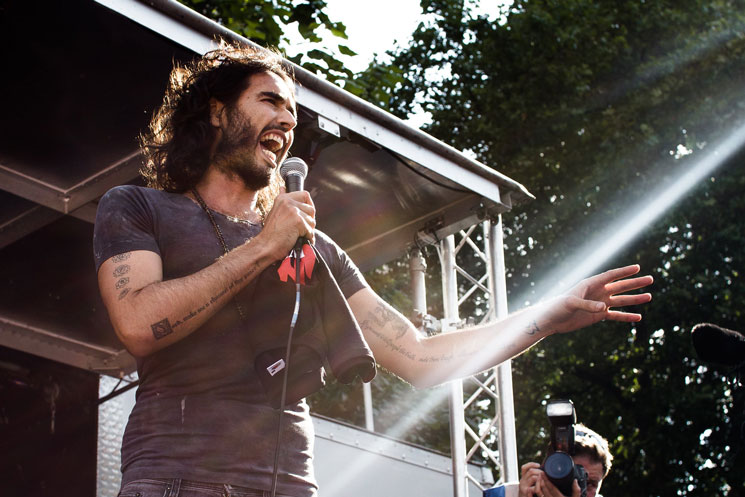
Disgraced comedian and actor Russell Brand has been charged with rape, sexual assault and indecent assault in the UK by the London Metropolitan Police.
Brand is facing charges of one count of rape, two counts of sexual assault, one count of indecent assault and one count of oral rape for alleged incidents that occurred between 1999 and 2005, related to four separate women.
The charges come from an investigation that began 18 months ago following the allegations reported by Channel 4 and The Sunday Times in September 2023.
According to a statement [via Deadline], the police have "issued a charge and requisition" to the entertainer, who has turned to spewing right-wing conspiracy theories on various social media platforms since the allegations — which he has denied — came to light. Brand is now due to appear at Westminster Magistrates' Court on May 2.
4 Apr 2025 14:04:49
 Press Progress
Press Progress
Conservative Candidate Used a Secret Signal Group Chat With Freedom Convoy Leaders, Right-Wing Media and Far-Right Influencers
One of Pierre Poilievre’s high-profile Conservative candidates was a member of a secret group chat used by Freedom Convoy leaders and their lawyers to coordinate messages on social media with right- ...More ...
One of Pierre Poilievre’s high-profile Conservative candidates was a member of a secret group chat used by Freedom Convoy leaders and their lawyers to coordinate messages on social media with right-wing alternative media personalities and far-right social media influencers.
The group chat on Signal, an encrypted messaging app, is called “Canada Freedom Rights Movement” and includes over 50 names associated with the Freedom Convoy and the Canadian far-right.
The group chat was first created around the time of the Emergencies Act Inquiry but remains operational today.

Signal group chat
Messages obtained by PressProgress suggest the group chat was created to give convoy leaders and their lawyers the ability to coordinate “media messaging / comms strategy” with “alt media / influencers,” who were cautioned that the “language we use … is incredibly important.”
An 88-page document with instructions on messaging and narrative control was made available to the alt media personalities and influencers by a lawyer with the right-wing Justice Centre for Constitutional Freedoms. Numerous group chat messages show its members exchanging information, debating ways to counter anti-convoy narratives and identifying tweets to share and amplify.
The group chat’s description identifies itself as a “clandestine” group and new members are warned to “remember the first rule of Fight Club.”

Signal group chat
The group chat lists two admins: Eva Chipiuk, a former Justice Centre for Constitutional Freedoms lawyer who represented convoy leaders at the Emergencies Act Inquiry, and Bethan Nodwell, a convoy organizer with ties to neo-Nazis and European far-right political actors.
The member list also includes the names of key Freedom Convoy figures, including convoy leaders Tamara Lich, Chris Barber and Tom Marazzo, as well as convoy lawyer Keith Wilson.
It also includes the names of dozens of far-right social media influencers and right-wing alternative media personalities from outlets like True North, Western Standard and Rebel Media.
Another name that appears on the list is currently running for Pierre Poilievre’s Conservatives in the Southwestern Ontario riding of Elgin – St. Thomas – London South: Andrew Lawton.

Signal group chat
Lawton is a right-wing alt media personality and former managing editor of True North who most recently chronicled the life and times of Pierre Poilievre as the Conservative leader’s biographer.
In 2018, Lawton ran a failed campaign under Doug Ford’s Ontario PCs that was derailed by his history of controversial statements and extreme positions on a variety of sensitive issues like abortion, LGBTQ+ rights, Islamophobia and defending on-campus debates about Holocaust denialism.
On Signal, Lawton was among the group chat’s most active members. In a number of cases during the Emergencies Act Inquiry in October 2022, tweets that appeared on Lawton’s Twitter feed could be traced back to conversations that originally began inside the secret group chat.

Signal group chat
Other messages show Lawton collaborating with and responding to suggestions from convoy lawyers.
In one October 2022 exchange, convoy lawyer Eva Chipiuk asked the group chat if someone “can get a clip out” from the testimony of Ottawa City Councillors Mathieu Fleury and Catherine McKenney.
“On it,” Lawton replied to the group chat.
15 minutes later, Lawton tweeted out the video clip in question with True North’s branding along with text aligned with the convoy lawyer’s suggested messaging.
“Here you go Eva Chipiuk,” Lawton reported back. “Thank you sir,” Chipiuk replied.

Signal group chat
Neither Lawton nor the Conservative Party of Canada responded to requests for comment about the candidate’s involvement in the Signal group chat, or whether Poilievre remains confident in Lawton as his candidate.
Several individuals whose names appear on the member list confirmed to PressProgress that they were active members of the group chat. The Signal accounts of a number of its members also connect to their real phone numbers.
Benita Pedersen, an energetic convoy organizer, confirmed being in the group chat, describing it as a “terrific way to get organized” and “share information.”
“I love being part of group chats,” Pedersen told PressProgress. “I guess one of the challenges I have is that I’m part of too many group chats.”
Rupa Subramanya, one of Lawton’s former True North colleagues, confirmed she too was also a member of the Signal group chat between October 2022 and November 2024, recalling Lawton was particularly “very active” in the group chat.
“I was just added to the group and I thought at first it would be a useful resource,” Subramanya told PressProgress, adding she eventually put the group chat on “mute” because she felt it became “completely useless.”
“There are a handful of messages I posted there mostly promoting stuff I was saying on social media,” Subramanya explained. “It was not a Signal chat group that Mike Waltz added me to or anything.”
In addition to coordinating messaging and social media content, the group chat also shows its members repeatedly mocking Ottawa residents for objecting to the Freedom Convoy’s three-week occupation of the city.
Eva Chipiuk, one of the convoy leader’s lawyers at the Emergency Act Inquiry, circulated a conspiratorial video claiming Ottawa resident Zexi Li is a Chinese “psy-op,” variously mocking the inquiry witness as an “alluring, young sexually viable TikTok hottie” and as “Ottawa’s Jeanne d’Arc.”

Signal group chat
Since leaving the group chat, Subramanya says she has learned “several of those people in that group” are “outright bigots.” Subramanya pointed to Bethan Nodwell, one of the group chat’s admins, as a “rabid antisemite bigot” who sent her “vile tweets mocking Hinduism.”
Evan Balgord, Executive Director of the Canadian Anti-Hate Network, notes the full group chat member list reads like a who’s who of right-wing media personalities and far-right activists. “Some of these people are quite extreme in my opinion,” Balgord told PressProgress.
“Bethan Nodwell, for example, is a self-identified white nationalist who has denied the Holocaust,” Balgord pointed out. “Shadoe Davis, another member of the chat, promoted the neo-Nazi Holocaust denial documentary series ‘Europa: The Last Battle’, which is a spanning piece of propaganda that blames Jewish people for starting the Second World War as part of a larger plot to lead to the foundation of Israel, while Adolf Hitler’s Nazis were merely defending themselves and Europe.”
Balgord added other names on the group chat member list are “associated with the white nationalist network Diagolon.”
The group chat member list is also notable given some of the names were under court order to have no contact with one another at the time.

Signal group chat
Both Tamara Lich and Chris Barber were released on bail under a condition that they not communicate, either “directly or indirectly” with one another. Lich was also ordered to have no contact with a third convoy leader, Tom Marazzo. The names of all three convoy leaders appear in the group chat.
Neither Lich nor Barber responded to requests for comment from PressProgress, while Marazzo replied tersely: “Don’t email me again.”

Signal group chat
Michael Spratt, a criminal defence lawyer based in Ottawa, says Lich and Barber’s presence in the group chat could potentially be construed as a breach of their bail conditions.
“The ‘non-communication’ (order) is a problem,” Spratt told PressProgress. “If you’re in a group chat with a bunch of people who you’re not supposed to be communicating with, that is direct or indirect communication.”
“There’s definitely grounds to lay a charge,” Spratt said. “I’ve seen people get charged with breaches for less.”
On Thursday, Tamara Lich and Chris Barber were both convicted of criminal charges in connection with their roles in the 2022 Freedom Convoy occupation of Ottawa.
The Justice Centre for Constitutional Freedoms did not respond to multiple requests for comment from PressProgress about the involvement of JCCF-affiliated lawyers running or participating in the group chat.
The post Conservative Candidate Used a Secret Signal Group Chat With Freedom Convoy Leaders, Right-Wing Media and Far-Right Influencers appeared first on PressProgress.
4 Apr 2025 14:02:43
 Global News
Global News
Amazon urged to remove ’51st state’ products from site. Will it listen?
A petition has been launched calling on Amazon to remove "51st state" merchandise, but business and marketing professors say it's unlikely to happen.
4 Apr 2025 14:02:12
 Global News
Global News
Canada lost 33K jobs in March as unemployment ticks up slightly
Canada shed 33,000 jobs in March and unemployment increased 0.1 per cent to 6.7 per cent as companies shift gears amid a broader trade war.
4 Apr 2025 14:02:04
 Rabble
Rabble
The issues facing working Canadians ahead of a federal election
Working Canadians are facing a multitude of issues in 2025. Between 2023 to 2024, in Ontario alone, one million people used food bank services – a 25 per cent increase from the year before. Canada&# ...More ...


Working Canadians are facing a multitude of issues in 2025.
Between 2023 to 2024, in Ontario alone, one million people used food bank services – a 25 per cent increase from the year before. Canada’s housing market is among the most unaffordable in the world. And of course – the latest crisis on everyone’s mind – the ongoing trade dispute with the United States.
With a federal election at the end of the month, there’s a lot to consider for working Canadians.
This week on rabble radio, labour reporter Gabriela Calugay-Casuga sits down with Deena Ladd, one of the founders and executive director of the Toronto Workers’ Action Centre. The two discuss the issues facing working Canadians today, how workers without union support are often more vulnerable to these issues, and how the Workers’ Action Centre advocates for fair work for all.
About our guest
Deena Ladd is one of the founders of the Toronto Workers’ Action Centre and currently serves as its executive director. Ladd has 30 years of organizing experience. She helped build grassroots campaigns like the Fight for $15 and Fairness campaign. Beyond the Workers’ Action Centre, Ladd has also fought for migrant justice through her involvement with the Migrants’ Rights Network and the Migrant Workers’ Action Centre.
The Workers’ Action Centre (WAC) is a worker-based organization. They are committed to improving the lives and working conditions of people in low-wage and unstable employment. They believe that the leaders in the fight for decent work should be the workers directly affected by poor working conditions. Workers have firsthand experience of problems at work, and have the best insight into what will bring fairness and dignity to Ontario’s workplaces.
If you like the show please consider subscribing on Apple Podcasts, Spotify, YouTube or wherever you find your podcasts. And please, rate, review, share rabble radio with your friends — it takes two seconds to support independent media like rabble. Follow us on social media across channels @rabbleca.
The post The issues facing working Canadians ahead of a federal election appeared first on rabble.ca.
4 Apr 2025 14:00:00
 Village Report
Village Report
Sell-off worsens worldwide and Dow drops 1,000 after China retaliates against Trump tariffs
NEW YORK (AP) — Stock markets worldwide are careening even lower Friday after China matched President Donald Trump’s big raise in tariffs in an escalating trade war . Not even a better-than-expect ...More ...
NEW YORK (AP) — Stock markets worldwide are careening even lower Friday after China matched President Donald Trump’s big raise in tariffs in an escalating trade war . Not even a better-than-expected report on the U.S.4 Apr 2025 13:59:47
 CityNews Halifax
CityNews Halifax
Ford to visit areas with prolonged power outages caused by ice storm in Ontario
Ontario Premier Doug Ford is set to visit some areas affected by prolonged power outages after a powerful ice storm hit central and northern parts of the province last weekend. More than 172,000 homes ...More ...
Ontario Premier Doug Ford is set to visit some areas affected by prolonged power outages after a powerful ice storm hit central and northern parts of the province last weekend.
More than 172,000 homes and businesses were still in the dark this morning after the storm caused severe damage in cities such as Orillia and Peterborough.
Another storm system that moved through parts of Ontario mid-week caused additional scattered outages and slowed down restoration efforts.
Hydro One said power has been restored to more than 85 per cent of nearly a million affected customers, but there is “still a lot of work ahead” until everyone gets their electricity back.
It said crews continue to discover significant damage as they work on restoring power to customers.
The utility said its crew members have discovered 1,826 broken poles so far.
This report by The Canadian Press was first published April 4, 2025.
The Canadian Press
4 Apr 2025 13:58:56
 VOCM
VOCM
RCMP Searching for Missing Man from Bonavista
The RCMP in Bonavista are looking for the public’s help in locating a missing man. Forty-five-year-old Jamie Peters was last heard from just before 10 a.m. on Monday. He’s described as b ...More ...
The RCMP in Bonavista are looking for the public’s help in locating a missing man.
Forty-five-year-old Jamie Peters was last heard from just before 10 a.m. on Monday.
He’s described as being five feet, 10 inches tall, and 150 pounds with grey hair and brown eyes. He has a scar on his forehead and a tattoo on his chest.
Peters was last seen wearing a black ball cap, black coat, black sneakers, and blue jeans.
Anyone with information is asked to contact the RCMP or Crime Stoppers.
4 Apr 2025 13:58:42
- Alberta Views
- APTN News
- Bay Observer
- Blacklock’s Reporter
- Brandon Sun
- The Breach
- The Breaker
- Briarpatch
- Broadview
- The Bureau
- Business in Vancouver
- The Buzz
- Cabin Radio
- Calgary Herald
- Canadian Affairs
- Canadian Dimension
- Cape Breton Spectator
- CBC
- CBC British Columbia
- CBC Calgary
- CBC Edmonton
- CBC Hamilton
- CBC London
- CBC Manitoba
- CBC Montréal
- CBC Newfoundland & Labrador
- CBC News Brunswick
- CBC North
- CBC Nova Scotia
- CBC Ottawa
- CBC Prince Edward Island
- CBC Saskatchewan
- CBC Saskatoon
- CBC Toronto
- ChrisD.ca - Winnipeg News
- CityNews
- CityNews Halifax
- CityNews Winnipeg
- CKRM News
- The Coast
- The Conversation
- Corporis debitis acc
- CTV News
- Cult Mtl
- The Discourse
- Discover Westman
- The Eastern Door
- Edmonton Journal
- Exclaim!
- The Flatlander
- Fredericton Independent
- Georgia Straight
- Global Montréal
- Global News
- The Globe and Mail
- The Green Line
- Hakai
- Halifax Examiner
- The Hatchet
- The Hub
- The Independent
- Indigenous Watchdog
- Indiginews
- Investigative Journalism Foundation
- Kingstonist
- Kingsville Times
- Ku’ku’kwes News
- The Line
- Maisonneuve
- The Maple
- Montréal Gazette
- Mr.
- Mr.
- Mr.
- Mr.
- Mr.
- Mr.
- Mr.
- Mr.
- Mr.
- Mr.
- Mr.
- Mr.
- Mr.
- Mr.
- Mr.
- Mr.
- Mr.
- Mr.
- Mr.
- Mr.
- Mr.
- Mr.
- Mr.
- Mr.
- Mr.
- Mr.
- Mr.
- Mr.
- Mr.
- Mr.
- Mr.
- Mr.
- Mr.
- Mr.
- Mr.
- Mr.
- Mr.
- Mr.
- Mr.
- Mr.
- Mr.
- Mr.
- Mr.
- Mr.
- Mr.
- Mr.
- Mr.
- Mr.
- The Narwhal
- National Observer
- National Post
- NNSL
- Nora Loreto
- North Western Ontario Newswatch
- Nova Scotia Buzz
- NTV
- Nunatsiaq News
- Ocean 100
- The Orca
- The Orchard
- Ottawa Citizen
- Passage
- Prairie Fire
- Press Progress
- Prince Albert Daily Herald
- Prince George Citizen
- The Province
- Québec Chronicle Telegraph
- Rabble
- Regina Leader Post
- Ricochet
- River Valley Sun
- The Sarnia Journal
- Sask Dispatch
- Saskatoon Star Phoenix
- Sherbrooke Record
- Shootin’ The Breeze
- Shoreline News
- The Sprawl Calgary
- Spring
- St. Croix Courier
- Steinbach Online
- Superior North Newswatch
- Swift Current Online
- Taproot Edmonton
- The Third
- This Magazine
- Thunder Bay Newswatch
- Toronto Star
- The Trillium
- The Tyee
- Vancouver Sun
- Victoria Times-Colonist
- Village Report
- VOCM
- The Walrus
- Winnipeg Free Press
- The Wren
- Xtra
- Yukon News


